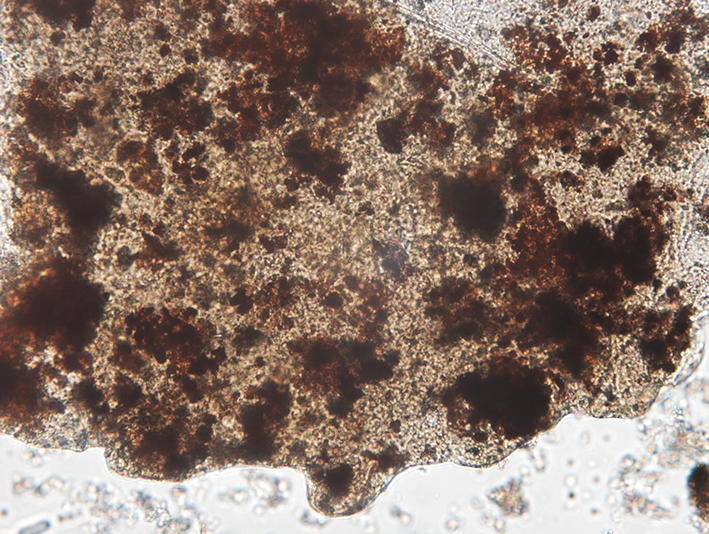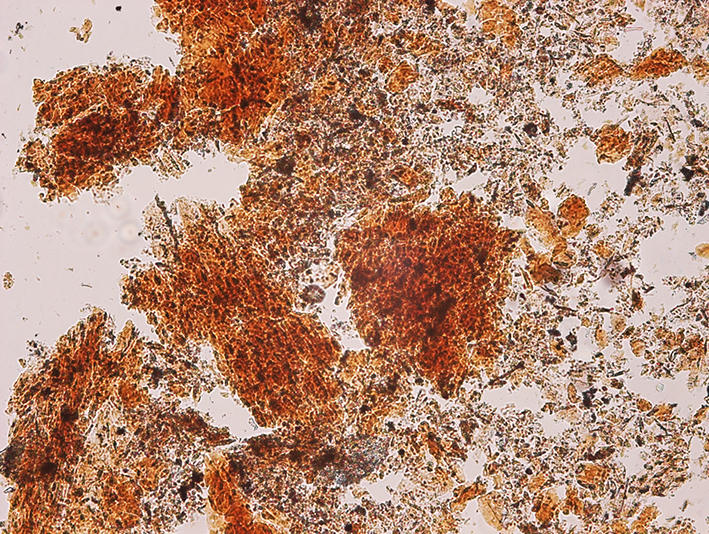Duck-billed dinosaur has preserved skin, blood vessels, and bone cells
Dino soft tissue continues to confound long-agers, 20+ years on
The first report about dinosaur soft tissue shook the scientific world.1 How could soft tissue possibly have survived the alleged 66 million years since dinosaurs became extinct? Since that time, people have questioned its validity, some expressed outrage, and there were those who simply didn’t want to acknowledge the discovery. Yet over the past 20+ years, so much dinosaur soft tissue has been discovered that it can now be confidently declared to be a frequent and consistent finding.



A recent example comes from a piece of fossilized hadrosaur skin, which had fragments of the dinosaur’s rib underneath it.2 Fossilized skin can be preserved in three ways: an impression (when for example a footprint is left in the mud); compression (the skin is pressed down flat); and permineralized three-dimensional skin. The last is the rarest, but in this case exactly what was found (figure 1). The 3D skin showed pebbly and irregular scales on top, and preserved the underlying dermis (the layer of living tissue underneath).
Upon examining the specimen, the team were able to report that when they had decalcified the skin and bone they found:
3D-preserved dark brown eumelanin-rich granules from the skin. Eumelanin is a biological pigment. While the team stated this may imply that the hadrosaur was grey, due to other variables such as the influence of the skin structure, they could not say this definitively (figure 2).
Blood vessel fragments and osteocytes (bone cells) in an organic matrix from the rib bone (figure 3).
Not surprisingly in view of the stunning implications of such soft tissue finds, the team wrote that “the skin and associated molecular preservation are still poorly understood.” Of course, any belief system that retains an increasingly irrational faith that these bones, and the original soft tissue material in them, are many tens of millions of years old will struggle greatly to explain such finds. But there is no need.
Dr Mary Schweitzer, who first presented dinosaur soft tissue discoveries to the world, was candid in her admission that any such find “leaves us with two alternatives for interpretation: either the dinosaurs aren’t as old as we think they are, or maybe we don’t know exactly how these things get preserved.”3 Calculations from known chemistry emphatically show that soft tissue material cannot last for tens of millions of years. Therefore the first option is doubtless correct.
The Bible is clear that God created both dinosaurs and man on Day 6 about 6,000 years ago. The dinosaur fossils that we are now able to examine were rapidly buried in sediment in the Noahic Flood around 4,500 years ago. The Bible’s history provides us with both a realistic set of conditions and a realistic timeframe to help understand such fossil finds. Until its truth is acknowledged, these soft tissue finds will continue to perplex those who don’t believe it.
References and notes
- Catchpoole, D., Double-decade dinosaur disquiet, Creation 36(1):12–14, 2014. Return to text.
- Fabbri, M. and 3 others, Three-dimensional soft tissue preservation revealed in the skin of a non-avian dinosaur, Palaeontology, 30 Dec 2019. Return to text.
- Ruppel, E. and Schweitzer, M., Not so dry bones: An interview with Mary Schweitzer, biologos.org, 21 Jul 2014. Return to text.





Readers’ comments
Comments are automatically closed 14 days after publication.